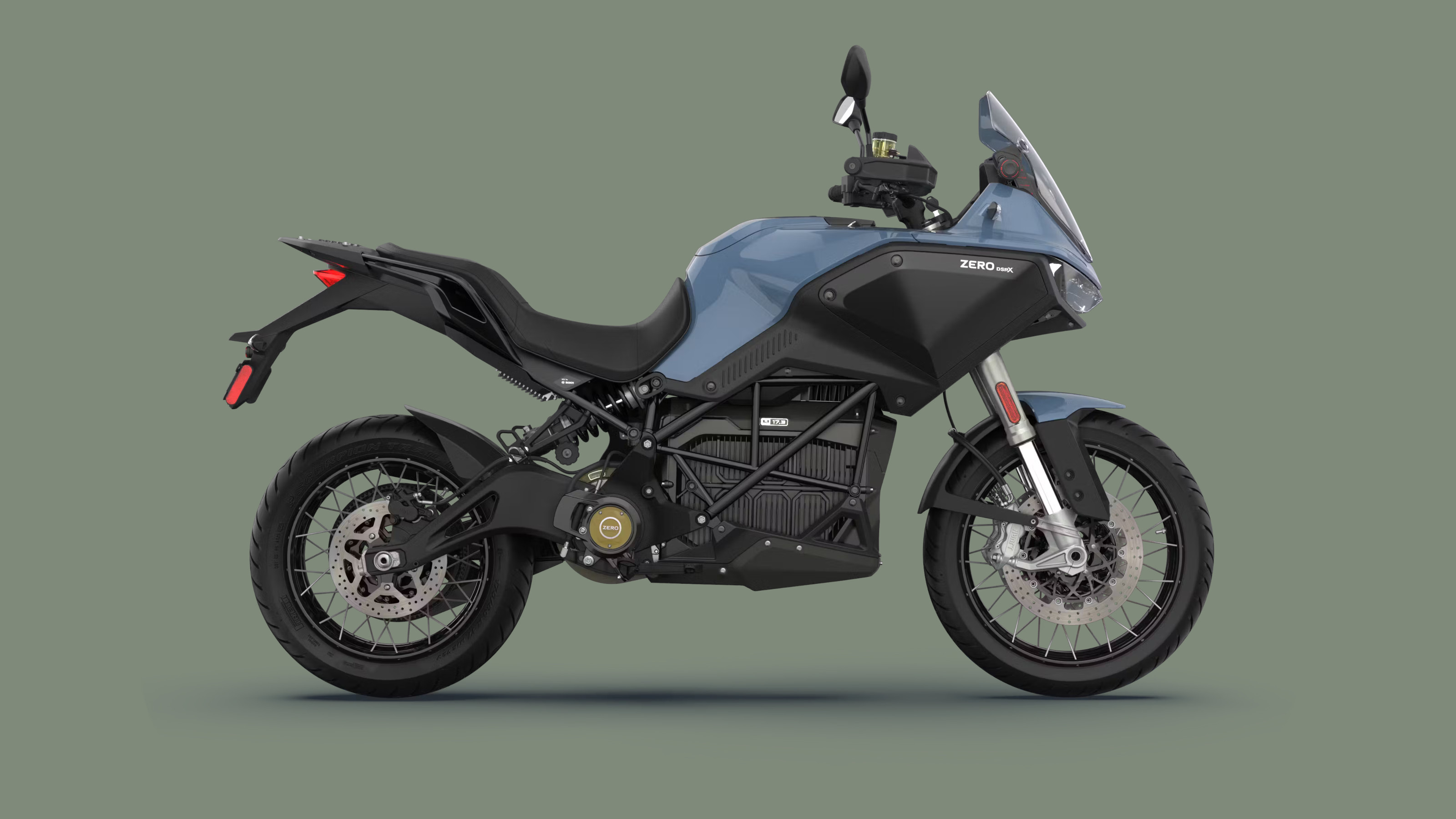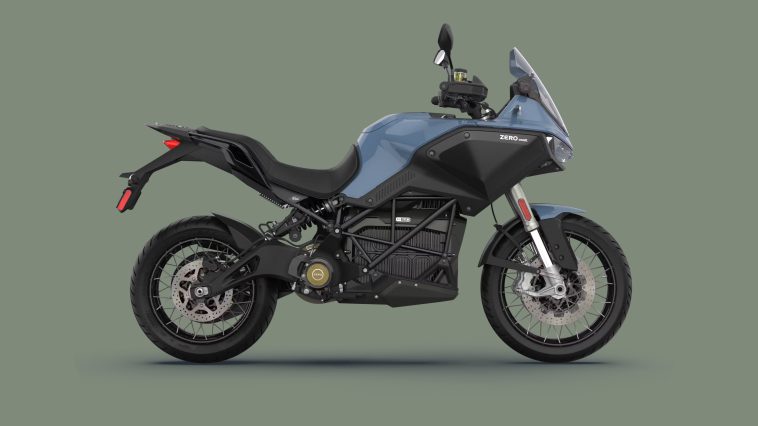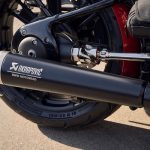
Electric Adventure Touring in a Changing Regulatory Landscape
The emergence of all‐electric adventure motorcycles is prompting a rethinking of what it means to ride on long, twisty roads. As legal frameworks continue to adapt to a greener future while contending with established norms, manufacturers like Zero Motorcycles are quietly drafting the blueprint for tomorrow’s touring vehicle. In this editorial, we take a closer look at the Zero DSR/X Black Forest, an electric motorcycle that not only pushes the boundaries of design but also raises intriguing legal and regulatory questions for traditional road travel.
In an industry historically dominated by petrol-powered machines with roaring exhausts and a dramatic presence, the DSR/X Black Forest is challenging preconceived notions about what a touring bike can be. Despite its familiar silhouette of steel trellis frames and telescopic forks, the bike presents interesting shifts in philosophy. On one hand, it is a fully equipped electric adventure-touring machine, and on the other, it carries a message about shifting regulatory standards and environmental responsibilities that resonate in more than just the performance sphere.
Revamping the Adventure Bike: A New Chapter in Motorcycling
The Zero DSR/X Black Forest represents a quiet revolution in adventure motorcycling. It is an electric vehicle designed to mix tradition with forward-thinking technology. At its core, the motorcycle honors its roots while delivering modern upgrades such as a full-colour TFT display, integrated pannier systems, and a central battery and mid-mounted motor that contribute to a balanced stance on the road.
Unlike some radical designs that might overwhelm riders with off-putting adjustments, the DSR/X Black Forest refines conventional form. Its design may not shout about its differences, but it quietly insists on them. This ability to combine subtle details with a future-leaning perspective portrays the perfect blend between legacy craftsmanship and innovative ingenuity. Nonetheless, it is important to consider that this innovation is as much about adapting to new environmental expectations as it is about enhancing the riding experience.
Engineering Excellence: Unraveling the Bike’s Innovative Design and Performance
Robust Yet Familiar: The Structural Blueprint
The bike’s design is built around a traditional silhouette that many riders already recognize. From its dual-sided swingarm and telescopic forks to the familiar stance of a touring motorcycle, the Zero DSR/X Black Forest maintains a reassuring presence. However, beneath the surface, there are plenty of little twists that carry the promise of a substantial shift in the industry.
The central mass of the battery and the mid-mounted motor lends the bike a well-balanced attitude, a critical selling point in the competitive market of adventure touring. Rider feedback consistently confirms that this low-slung battery mass contributes to a sense of calm stability, an asset when navigating the tricky parts of long journeys. Moreover, the high-quality TFT display, integrated with modern operating systems, marks the shift toward more streamlined, user-friendly interfaces in conjunction with advanced ride modes.
Performance Metrics: Power, Torque, and Range
From a performance standpoint, the DSR/X Black Forest comes equipped with a 75 kW Z-Force motor that delivers up to 229 Nm of torque instantaneously. This performance is noteworthy as it provides ample power right from zero rpm. While such figures read impressively on paper—comparable to roughly 100 horsepower—the reality of long-distance touring is a mixture of sharp responsiveness and limitations that require legal and practical consideration.
The advertised city range may peak at 179 miles under ideal conditions, but real-world tests suggest a more modest range of about 130 miles on UK roads, especially when pushing the throttle hard. Though this may be enough for a spirited day out or planned touring, the reality of battery drain due to cargo, wind resistance, and grade changes assigns an element of calculated risk management, where riders must plan stops more carefully than they would on a petrol machine.
Optimizing Battery Technology and Charging: Critical Considerations for Riders
Battery Capacity and Real-World Efficiency
The heart of the DSR/X is its 17.3 kWh battery—the largest single pack offered in production bikes by Zero. This power source provides the bulk of the energy needed for the journey and serves as a reminder that while progress has been made, there are still several complicated pieces to manage. For longer rides, Zero offers an optional Power Tank upgrade that increases capacity to around 21 kWh, helping to offset the subtle efficiency drawbacks imposed by extra mass and aerodynamic drag.
In a market where every mile counts, this design decision has a dual purpose. On one side, it embodies an innovative step towards improving range and efficiency. On the other, it introduces potential legal implications, particularly when it comes to warranty regulations, consumer information transparency, and even local transportation safety standards.
Charging Dynamics: Balancing Efficiency and Time
Charging technology remains the Achilles’ heel of many electric vehicles, and the DSR/X Black Forest is no exception. The bike is equipped with a standard 6.6 kW onboard charger, with an option to upgrade to a 12.6 kW variant. Despite this, a full charge can take between 2 to 3 hours under optimal conditions and significantly longer from a domestic outlet. When seen from a legal perspective, ensuring that the charging infrastructure meets safety and accessibility regulations is super important in order to keep pace with demanding consumer expectations.
This aspect of the ride has significant legal implications. Riders may need to understand the stipulations regarding charging safety, socket compatibility, and adherence to local building codes when installing home charging systems. Moreover, any foreseeable delays in charging infrastructure evolution could lead to a somewhat nerve-racking landscape for long-distance adventure touring.
Comparison Table: Charging Output and Battery Capacity
| Specification | Standard Configuration | Optional Upgrade |
|---|---|---|
| Battery Capacity | 17.3 kWh | Up to 21 kWh (with Power Tank) |
| Onboard Charger | 6.6 kW | 12.6 kW |
| Charging Duration | 2-3 hours (Optimal Conditions) | Faster Charging – Still requires planning |
Riding Experience: A Blend of Tradition and Modern Innovation
Comfort and Control: The Rider’s Perspective
Riding the DSR/X Black Forest is a study in contrasts. On one hand, the immediate surge of torque and the distinct, high-pitched motor sound create a unique and engaging experience. On the other, the bike’s ergonomic design—featuring an 828mm seat height, wide handlebars, and an effective adjustable screen—ensures that even long journeys are manageable from a comfort perspective.
Despite the well-considered design, occasional frustrations such as a somewhat fussy switchgear and the limited range after hours on the road remind riders that the integration of new technology is not without its little twists. These are not overwhelming issues, but rather complicated pieces that illustrate the challenges of harmonizing legacy function with next-generation innovation.
Ride Modes: Tailoring Performance to Conditions
The DSR/X Black Forest comes with an assortment of preprogrammed ride modes: Sport, Street, Eco, Rain, and Canyon. Each mode is crafted to provide a distinct riding experience, altering power maps, regenerative braking, and overall throttle responsiveness. This level of customization offers riders the ability to adapt quickly to various road conditions, from bustling urban environments to quieter country lanes.
For legal professionals interested in consumer rights and product claims, these ride modes represent an intriguing case study. Manufacturers must balance the excitement of high-performance sport settings against the safety and liability concerns inherent in a system driven by software. Ensuring that each mode meets both safety standards and customer expectations is a subtle detail that speaks volumes about the interplay between engineering innovation and regulatory oversight.
Legal and Regulatory Implications: The Broader Landscape
Safety Regulations and Consumer Protections
In an era where clean technology is celebrated, the introduction of electric motorcycles places a renewed emphasis on safety regulations and consumer protection laws. The Zero DSR/X Black Forest, with its integrated Bosch cornering ABS and traction control systems, complies with existing safety mandates while also pointing towards future regulatory challenges. The bike’s seamless integration of advanced safety features with electric powertrain specifics is as much an engineering feat as it is a legal balancing act.
Given the rapid evolution of battery technology and related charging infrastructure, lawmakers and regulatory bodies must sort through a maze of concerns. These include ensuring safe usage of high-capacity batteries, the environmental impact of battery production and disposal, and consumer transparency regarding long-term maintenance costs. In many ways, these are the tricky parts of contemporary transport regulation that require both creative solutions and rigid oversight.
Environmental Legislation and Emission Standards
The transition towards electric vehicles is arguably one of the most significant shifts in environmental regulation in recent times. The promise of zero emissions, as showcased by the DSR/X Black Forest, aligns with global efforts to reduce carbon footprints. However, the legal framework surrounding electric vehicles is still loaded with issues related to energy sourcing, battery disposal, and the true environmental cost of producing advanced technologies.
Lawmakers face a dual challenge—encouraging innovative green technology while also safeguarding public interests. For instance, the legal implications of a charging network that may not be uniformly accessible across regions or the environmental impact of battery lifecycle management are areas where legislative clarity is still evolving. This tension between technological advancement and environmental accountability is a key talking point in current debates about the future of transportation law.
Intellectual Property and Design Regulation
The sleek yet quiet design innovations introduced with the DSR/X Black Forest also pose interesting questions related to intellectual property. The evolution of design, particularly in a sector as competitive as motorcycling, brings with it nuanced challenges regarding patents, trademarks, and design copyrights. Manufacturers like Zero must balance preserving their unique design elements with ensuring compliance with international regulations on automotive design.
For legal experts, the importance of clearly defining what constitutes a protectable design feature cannot be understated. The interplay between innovation and legal protection is a delicate dance, where even the smallest twist in design may carry significant commercial and legal consequences. Clearly, the DSR/X Black Forest is not only a marvel of motor engineering but also a product that stands at the crossroads of legal innovation and competitive industry practices.
Market Dynamics: Comparing Electric and Traditional Touring Motorcycles
Pros and Cons: An In-Depth Look
When evaluating the DSR/X Black Forest against conventional petrol-powered touring motorcycles, several key benefits and drawbacks emerge. Understanding these factors is crucial not only for prospective riders but also for regulators and industry stakeholders who want to keep pace with rapid technological changes.
Advantages
- Zero Tailpipe Emissions – A strong environmental advantage that meets increasingly strict emission standards.
- Instantaneous Torque – Enhanced performance with rapid acceleration, providing a different kind of riding experience.
- Advanced Safety Features – Integration of Bosch’s MSC system adds layers of safety that conform with new regulatory expectations.
- Modern Design and Ergonomics – Subtle yet effective design touches deliver a balanced ride even on long journeys.
- Customizable Ride Modes – Multiple preprogrammed settings facilitate different scenarios, from urban riding to off-road exploration.
Drawbacks
- Limited Real-World Range – Although impressive on paper, practical range often falls short, demanding more careful journey planning.
- Charging Infrastructure Challenges – The dependence on Type 2 connections and relatively prolonged charging times can be a significant hurdle.
- Potential for Overwhelming Technological Complexity – Advanced systems may lead to occasional frustrations with switchgear and other controls.
- Ergonomic Constraints on Long Journeys – Even with thoughtful design, extended rides can lead to discomfort as the seat and controls may not suffice for every rider’s build.
- Legal and Regulatory Uncertainties – Rapid technological evolution means that laws and standards are struggling to keep pace, potentially placing early adopters in a tricky situation.
Side-by-Side Comparison: Electric Versus Petrol Motorcycles
| Characteristic | Electric (DSR/X Black Forest) | Petrol-Powered |
|---|---|---|
| Emissions | Zero tailpipe emissions | High emissions, subject to strict regulations |
| Torque Delivery | Instant torque from zero rpm | Gradual power build-up |
| Charge Time | 2-3 hours minimum (longer from domestic outlet) | Refueling in minutes |
| Range | Approximately 130-179 miles (varies with usage) | Generally higher range per refuel |
| Legal Landscape | Subject to emerging electric vehicle regulations | Well-established fuel and emissions laws |
The Broader Impact: Paving the Way for Future Legislation
Adapting Law to a Rapidly Evolving Industry
The advancement of electric motorcycles like the Zero DSR/X Black Forest is emblematic of broader shifts in both consumer expectations and legal landscapes. Legislators and legal experts are increasingly required to get into the fine points of energy management, consumer safety, and intellectual property protection pertaining to these products. New regulatory frameworks must contend with the following factors:
- Battery Safety: Laws must ensure that battery production, use, and disposal adhere to strict safety guidelines, minimizing risks to consumers and the environment.
- Charging Infrastructure: There is a growing need for standardized regulations around public and private charging facilities to accommodate the increasing number of electric vehicles.
- Consumer Transparency: Clear and accurate information on range, performance, and potential limitations is essential, reducing the risk of misleading claims that could result in legal disputes.
- Environmental Accountability: As governments push toward lower emissions, laws need to address the full ecological footprint of electric motorcycle production and end-of-life processes.
Each of these considerations represents not only engineering challenges but also legal ones, where clear statutes and enforcement mechanisms must be put in place. This new terrain calls for an ongoing dialogue between industry experts, legal professionals, and regulatory bodies—a dialogue that is as critical as it is delicate.
Legal Precedents and Future Trends
Historically, legal frameworks have been slow to catch up with technological innovations. However, with the increasing adoption of electric vehicles, there is a pressing need for the law to be both adaptive and prescient. Future trends may include:
- Standardization of Electric Charging Stations: Unified guidelines could simplify the complexities of installation and usage, reducing the nerve-racking unpredictability for both riders and service providers.
- Enhanced Warranty and Liability Clauses: With the integration of sophisticated software-driven systems, manufacturers may need to offer warranties that specifically address electronic components and ride mode functionality.
- Environmental Impact Regulations: As batteries become larger and more complex, comprehensive policies mandating environmentally sound disposal and recycling practices are likely to see further development.
Legal professionals and policymakers must sort through these tangled issues to ensure that innovation is not stifled, yet public safety and consumer rights remain fully protected. The evolution of legal precedent in this domain will ultimately shape the future of not just electric motorcycles but the overall landscape of sustainable transportation.
Industry Perspectives and Consumer Implications
Market Reception and Future Outlook
The market reception of the Zero DSR/X Black Forest has been closely watched by industry insiders and regulatory bodies alike. Consumers appreciate the blend of modern efficiency and the enduring aesthetics of a touring motorcycle. Yet, some of the bike’s limitations, such as the slightly shorter range and charging time, inject an element of cautious optimism among traditional touring enthusiasts.
From a legal standpoint, consumer protection agencies must remain vigilant to ensure that the promises made by manufacturers match the real-world performance. Transparency in advertising, clear articulation of warranty terms, and adherence to safety norms are areas where even minor missteps could trigger legal challenges. The balance between innovation and reliable transportation is one that must be continually monitored.
Consumer Advice: Questions to Consider Before Making the Leap
For potential buyers considering the shift from petrol to electric touring motorcycles, it is essential not only to focus on performance metrics but also to consider the legal and infrastructural aspects that underpin this relatively new technology. Here are some critical questions riders might want to ask:
- How does the range of an electric motorcycle compare to traditional models in everyday usage?
- Are the charging points readily accessible in your local area, and do they meet regulatory safety guidelines?
- What are the long-term maintenance and warranty considerations, especially concerning the advanced electronics?
- How transparent is the manufacturer about real-world performance versus laboratory conditions?
- What legal protections are in place in the event of a fault in the battery or charging system?
Keeping these questions in mind helps ensure that the transition to electric motorcycles is both an exciting venture into emerging technology and a legally secure one.
Looking Ahead: The Road to Sustainable Adventure Touring
Balancing Innovation, Regulation, and Consumer Demand
At its core, the Zero DSR/X Black Forest is more than just a motorcycle—it is a futuristic glimpse into a world where sustainable energy meets high-performance engineering. The balance between immediate torque delivery, battery efficiency, and a host of integrated safety features signals a compelling offering on paper. Yet, the reality is that embracing such innovation means accepting a set of complicated pieces that require careful planning and regulatory oversight.
Both motorcyclists and legal experts must learn to get around these tangled issues through a combined effort to modernize laws that address new technology while preserving the excitement and spontaneity of adventure touring. The legal community’s role in establishing clear standards and practices will be key to ensuring that the potential of electric motorcycles is fully realized without undue legal or consumer risk.
Bridging the Gap: Future Developments in Electric Motorcycling Legislation
As manufacturers push the envelope with innovations like the DSR/X Black Forest, the legal community is poised to witness—and perhaps even shape—a series of regulatory developments. Future legislation might include:
- Enhanced Safety Certification Processes: Ensuring that high-tech components are thoroughly vetted under updated, stringent certification protocols.
- Uniform Standards for Battery Recycling: Mandating transparent, environmentally sound disposal practices for depleted battery packs.
- Public-Private Partnerships to Expand Charging Infrastructure: Robust collaboration between government bodies and private entities to accelerate the rollout of user-friendly charging networks.
- Digital Compliance Measures: Enforcing regulations that mandate regular software updates and cybersecurity measures to protect riders from potential electronic vulnerabilities.
These steps could make riding an electric motorcycle not only a flagship of sustainable innovation but also a legally backed, consumer-friendly alternative to traditional touring bikes.
Final Thoughts: Embracing the Future with Caution and Optimism
The transition from petrol-dependent touring motorcycles to electric vehicles such as the Zero DSR/X Black Forest embodies a profound transformation in both technology and regulatory practice. While the promise of immediate torque, modern design, and an environmentally zero-emission operation is undeniably attractive, both riders and lawmakers need to figure a path through the challenging bits of new technology adoption.
It is clear that the DSR/X Black Forest is more than just a new motorcycle—it is a statement about the future of sustainable, high-performance transport. Its quiet yet innovative approach stands in contrast to the louder, more traditional machines of the past, offering a refined balance of performance, safety, and modern aesthetics.
At this intersection of engineering brilliance and legal innovation, the electric motorcycle is heralding a new era of adventure touring. For consumers, the journey is one that calls for reflective planning, asking the right questions and understanding the legal backdrop against which these fantastic machines now operate. For legal professionals, it is an opportunity to shape regulatory frameworks that not only foster innovation but also protect consumers in an environment loaded with new challenges and opportunities.
As we continue to witness the evolution of both technology and law, one thing remains certain: the road ahead is filled with promise—but also with plenty of intricate pieces that everyone, from riders to lawmakers, must carefully negotiate. The Zero Motorcycles DSR/X Black Forest is a compelling chapter in this unfolding story, a testament to how far we have come and the exciting potential that lies ahead in the realm of electric adventure touring.
Originally Post From https://www.wallpaper.com/transportation/a-rugged-new-tourer-from-zero-motorcycles-is-an-important-step-forward-for-all-electric-biking
Read more about this topic at
Introducing the Reimagined 2026 Touring Edition
The TC8 is a revolutionary 1:10 scale 4WD electric touring …


